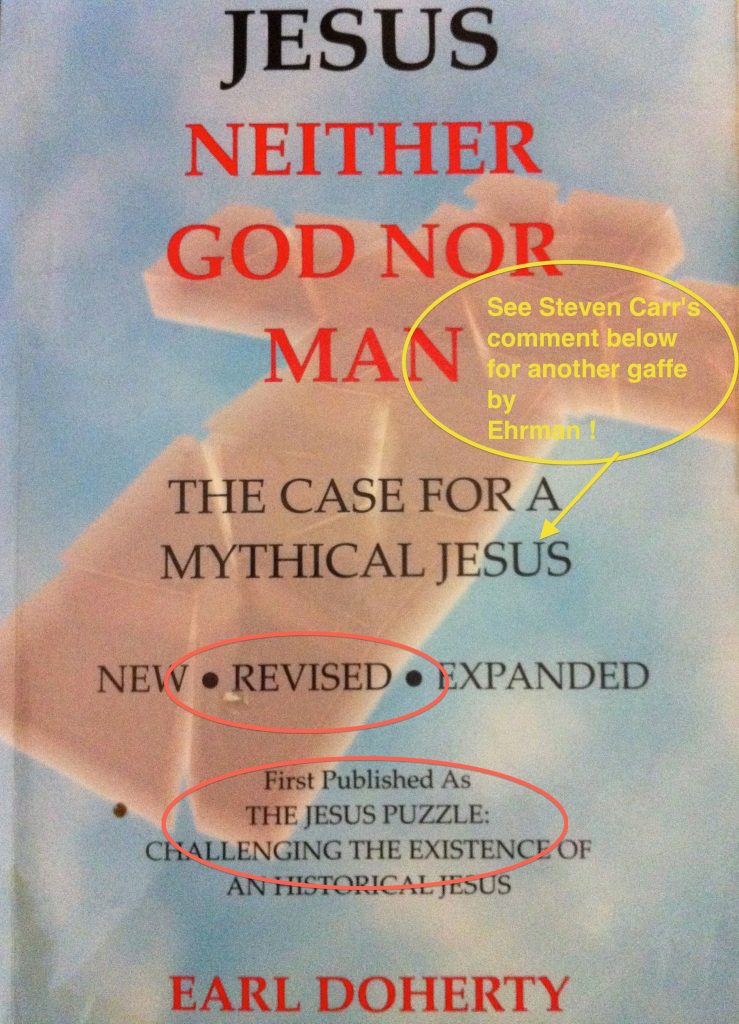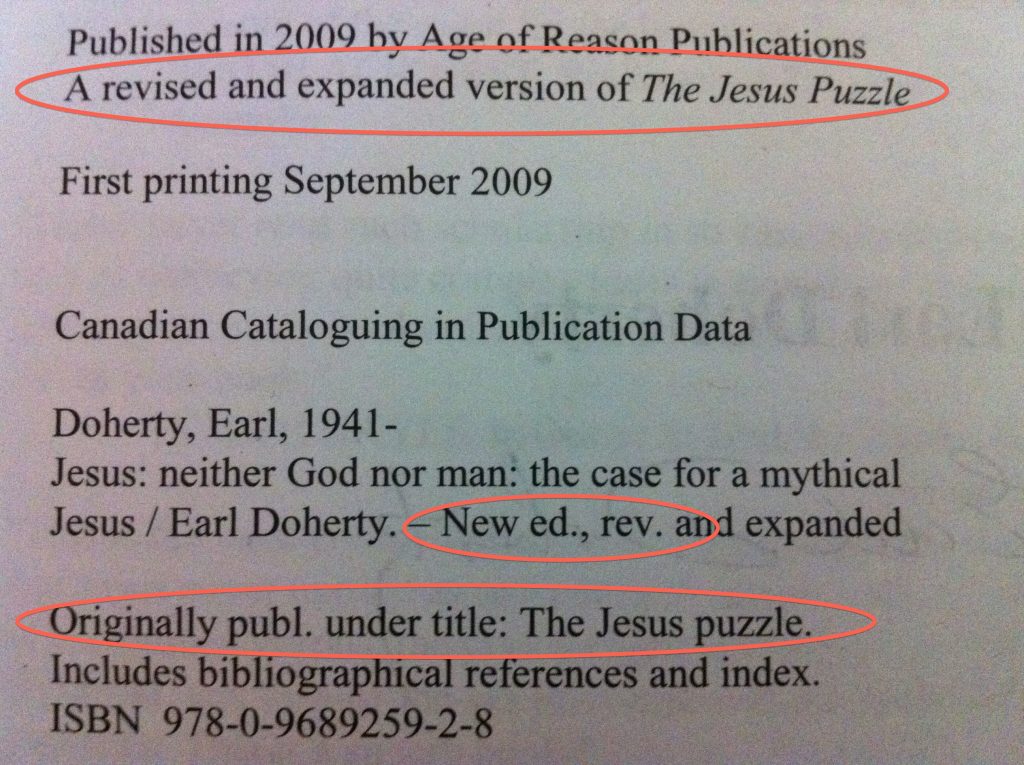*
Earl Doherty’s Response to Bart Ehrman’s Case Against Mythicism – Part 4
.
In this post Doherty covers Ehrman’s arguments dealing with:
- Probability in history and the burden of proof
- Ideal evidence historians want against what they actually have
- Ehrman downplays the problems with the (lack of) evidence
- Unsuccessful comparison with Pontius Pilate
- Absence of eyewitness accounts
- Late date of the gospels
- Ehrman overlooks problems with Luke’s Prolog
- Ehrman overlooks scholarship on the origin of the Gospel of Luke
- Ehrman fudges reference to the backbone of New Testament scholarship (Markan priority)
.
* * * * *
Preliminary Remarks
(Did Jesus Exist? pp. 37-39 of Chapter 2)
.
In yet another preface to his discussion of the non-Christian witness to Jesus, Ehrman examines some of the principles involved in historical research. No, it is not like science which can repeat experiments and get observable results.
Technically, we cannot prove a single thing historically. All we can do is give enough evidence (of kinds I will mention in a moment) to convince enough people (hopefully nearly everyone) about a certain historical claim . . . . (p. 38, DJE?)
Burden of Proof
True, all we can really establish is “probabilities” based on judgments about the evidence. And yes, I agree with Ehrman and against Price and some other mythicists that the burden of proof does not lie entirely on the historicist side. As Ehrman quotes E. P. Sanders: “The burden of proof lies with whoever is making a claim.” The problem is, historicists have a habit of maintaining that no burden lies on their side, or else (too often) that adequate ‘proof’ is to be garnered simply through majority opinion, the authoritative consensus which scholars past and present have adopted that an historical Jesus existed. When asked to actually present an adequate case for the existence of the Gospel Jesus, the demand is too often brushed aside as ‘already proven’ or by simple dismissal as an axiomatic non-starter, dissented to only by those driven by an “agenda.”
*
The Kind of Evidence Historians Want
(Did Jesus Exist? pp. 39-42 of Chapter 2)
.
Ehrman asks what kind of evidence historicists look for, and rely upon, to establish the existence of a given person in the past. He enumerates a “wish list.” Hard, physical evidence, such as photographs. Obviously, none of the latter are available for Jesus, but Ehrman goes further and admits that there is no physical evidence of any kind. No archaeological evidence; again, probably not surprising. No contemporary inscriptions, no coins. Fine. No writings: perhaps a little less natural, but perhaps he was illiterate; or if he could read, he could not write, although Ehrman fails to note that there was nothing stopping him from dictating (it wasn’t a far-fetched idea to Eusebius some centuries later who quotes clearly fabricated correspondence between Jesus and an Edessan king).
Ehrman focuses on the most common form of written witness: documents about a person. The more the better, and best that they be independent and corroborative. At this point, he once again fails to make it clear that the four Gospels are anything but independent and corroborative. They are all dependent on Mark, with one reasonably perceivable lost source, the Q document extractable from Matthew and Luke. John, too, is dependent on Mark for his passion story, and where he is not dependent on a Synoptic source, namely in his portrayal of Jesus’ ministry and the content of his teaching, he is not corroborative. For he gives us a drastically different set of teachings by Jesus, thereby casting doubt on the authenticity of any of the teachings of Jesus, for how could John take the liberty of going off on such an alien tangent from the others, totally ignoring them, if the others were real and reliable?
Another preferred feature of written records is proximity in time, the closer the better. Leaving aside efforts by conservative scholars, the standard dating of the Gospels, all of them following soon after the Jewish War, is not close proximity, especially given the disruptive effects of that war on all of Palestine. A considerable number of mythicists prefer to date all the Gospels well into the second century, but even if a compromise is adopted (I and others like G. A. Wells, with demonstrable reasons, would date Mark to around 90, with the rest following over the next two to three decades; see Jesus: Neither God Nor Man, p.400f), we have nothing resembling proximity. And another wish-list preference, disinterest on the part of the writers about their subject, is as far from the actuality of the Gospels as one can get.
*
The Sources for Jesus: What We Do Not Have
(Did Jesus Exist? pp. 42-50 of Chapter 2)
.
No Witness to Jesus in the First Century
Ehrman attempts to address this lack head-on. But he makes observations which are patently a down-playing of the real situation. No Greek or Roman author in the first century makes mention of Jesus? No matter, Continue reading “4. Earl Doherty’s Response to Bart Ehrman’s Case Against Mythicism: Chapter 2 continued”
Like this:
Like Loading...





